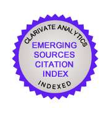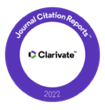Galerías de arte dirigidas por mujeres en el Buenos Aires de 1956
DOI:
https://doi.org/10.22530/ayc.2024.25.731Palabras clave:
Juan Navarro Ramón, Galería Pizarro, Buenos Aires, Josefina Pizarro Crespo, Mane Bernardo, Josefina Zamudio, Galería Peuser, Galería Van Riel, Galería AntígonaResumen
El origen de este recorrido por las galerías de arte bonaerenses regentadas por mujeres durante la década de 1950 es precisamente Juan Navarro Ramón y la exposición que realizó en 1956 en una de ellas, la Galería Pizarro. Para quien esto escribe, tuvo lugar en el primer lustro del siglo XXI un despertar a este artista alteano y su vinculación con las mujeres, tanto en su vida personal y cotidiana como en su obra pictórica. Sin duda, un viaje posterior a Buenos Aires conduciría mis pasos a intentar caminar los suyos y los de su esposa casi siete décadas más tarde.
Navarro Ramón recorrió muchos lugares en la geografía española y europea, espacios a los que regresaba o que visitaba solo una vez. Entre estos últimos se encuentra Buenos Aires, hacia donde partió, junto a su esposa, Josefa Fisac, en agosto de 1956 desde el puerto de Barcelona. Cinco años antes, en 1951, su obra Femme et guitarre fue adquirida por el Musée d’Art Moderne de París consiguiendo así que el nombre de Navarro Ramón comenzara a sonar en el mundo. Es precisamente Femme et guitarre la imagen que aparece en la invitación de la exposición que inaugura el 10 de septiembre de 1956 en la Galería Pizarro, en Buenos Aires. Llevaba Navarro entonces la intención de visitar la Argentina y Brasil —la Bienal de São Paulo nace en 1951—. Este artículo va a centrarse en la primera parte de ese viaje y, dentro de ésta, a recorrer junto a Navarro y Fisac las calles bonaerenses y las galerías regentadas por mujeres hasta llegar a la ya mencionada Galería Pizarro, donde expuso junto a dos mujeres artistas: la pintora, escritora, titiritera y grabadora Mane Bernardo y la escultora autodidacta Josefina Zamudio. La Galería Pizarro, fundada a finales de 1955, es la primera regentada por una mujer sola en la capital argentina.
Entre las galerías que se relacionan está la Galería Peuser (1944-finales de los sesenta), por haber sido dirigida por Antonio Chiavetti, artista que tiene obra depositada en el Museo Castagnino+Macro —en la ciudad argentina de Rosario—, como Navarro Ramón; la Galería Van Riel —creada en 1924—, por contar desde 1952 con una sala —la V, dedicada a Pintura Moderna— dirigida por María Sara de Jiménez y la Galería Antígona (1954-1979), dirigida por tres mujeres: Mabel y Mary Castellano y Nelly Freire.
Citas
BABINO, Malena (2020), “Van Riel una galería emblemática a través de 96 años de trayectoria”, http://galeriavanriel.com.ar/galeria/historia. Con-sulta: 29-1-2024.
BALSALOBRE, Juana María (2002), “Navarro Ramón de la oscuridad de la Guerra a la luz de Collioure”, AACA Digital, Asociación Aragonesa de Críticos de Arte, N.º 63, junio, 2023. https://www.aacadigital.com/contenido .php?idarticulo=2090. Consulta: 2-2-2024
BALSALOBRE, Juana María (Com.), (2005) Juan Navarro Ramón (1903-1989), Alicante, Instituto Alicantino de Cultura Juan Gil Albert.
BALSALOBRE, Juana María (2015) Descubre una obra de arte en el MUBAG (2005-2015) Ciclo de conferencias. Alicante, Instituto Alicantino de Cul-tura Juan Gil-Albert, pp. 31-32.
BERMEJO, Talía (2011), “El salón Peuser: entre la apuesta comercial y afian-zamiento de un mercado para Buenos Aires”. Arte y Sociedad. Revista de Investigación; Málaga, pp. 1-12. https://www.eumed.net/rev/ays/0/tb.html. Consulta: 29-1-2024
BONET, Juan Manuel, (2010), Alicante moderno 1900-1960, un retrato de la cultura alicantina, Mubag, Alicante, Diputación Alicante.
DEVAUX, Dominique (1997): “Les archives de la direction de la Sûreté rapa-triées de Russie” La Gazette des archives, nº 76, 1997, pp.78-86. www.persee.fr/doc/gazar_0016-5522_1997_num_176_1_3455
DI MAGGIO, Nelson (1956). “La actividad plástica en Buenos Aires”. Revista Marcha, 4 de mayo de 1956, Montevideo.
DOLIKA (1957). “Las vendedoras de sueños”, El Hogar, 9 de agosto de 1957.
EIROA, Matilde (2010): «La embajada de Praga y el servicio de información de Jiménez de Asúa» pp. 233-234, Capítulo (VII) en Ángel VIÑAS (dir.) Al Servicio de la República. Diplomáticos y Guerra Civil, Marcial Pons y Mi-nisterio de Asuntos Exteriores, pp. 207-240.
FEBVRE, Lucien (1982): Combates por la historia, Barcelona, Ariel.
GALÍ, Jordi (2016): Alcaldes de Girona 1931-1939, Expèdit Duran i Fernández, Girona.
IORDACHE, Luiza y Negrete (Coord.) (2021): Mujeres en el exilio republicano de 1939 (Homenaje a Josefina Cuesta) Ministerio de la Presidencia, Relacio-nes con las Cortes y Memoria Democrática, Madrid.
IORDACHE, Luiza (2019): “Españoles tras las alambradas. Republicanos en los campos franceses, nazis y soviéticos (1939-1956)”. Hispania Nova, nº 1 extraordinario, 2019. pp. 19-65
L’INDEPENDANT (15/2/1939) “Les divers problèmes que soulève le séjour des réfugiés espagnols; Deux anarchistes évadés d’un camp de concentration vivaient largement à Marseille”. Archives Municipales Camille Fourquet, Perpignan. A230172/ D230173.
MARTÍNEZ LÓPEZ, F; “Los andaluces en el exilio del 39”. Centro de Estudios Andaluces, Cuadernos de Andalucía en la Historia Contemporánea, Sevilla, 2014, pp. 136-137.
MORADIELLOS, Enrique (2015): “El exilio republicano español de 1939, una ponderación historiográfica”, Revista de Estudios Extremeños, Tomo LXXI, Número III, 2015, pp. 1991-2006.
MORENO VILLARREAL, J. (2021): Frida en París, 1939. Turner, Madrid, pp. 189-202.
MUSEO MODERNO, Frans van Riel funda la revista Augusta. https://museomoderno.org/mapadelarte/artistas/van-riel-frans/. Consul-ta: 24-1-2024
PÉREZ RODRÍGUEZ, Jonay (2022): “Los indeseables españoles. La gestión de los refugiados en Francia (1936-1945)”, Centro de Estudios Políticos y Constitucionales, Madrid, pp. 104-271.
PETITJEAN, M. (2019): El Corazón, Frida Kahlo en París. Barcelona, Circe, p. 103.
POVEDA NAVARRO, Antonio – VALERO ESCANDELL, José R. (Coord.) (2006): Historia de Elda, Ayuntamiento de Elda, Caja de Ahorros del Mediterrá-neo.
ROLDÁN CAÑIZARES, Enrique (2019): “Luis Jiménez de Asúa. Derecho penal, República y Exilio”, Dykinson S.L., Madrid.
Descargas
Publicado
Cómo citar
Número
Sección
Licencia
Derechos de autor 2024 ARTE Y CIUDAD. Revista de Investigación

Esta obra está bajo una licencia internacional Creative Commons Atribución-NoComercial 4.0.











